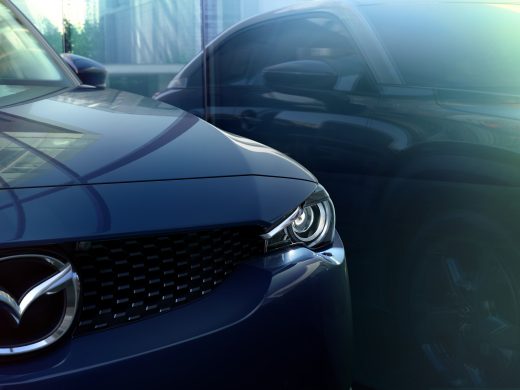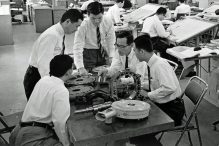As a global society we have become more aware of the impact we have on the environment and the need to create a sustainable future through developing products and processes that are contributing towards the reduction of emissions and materials that have an adverse effect on the environment. In response to this need Mazda has been at the forefront of plastic recycling for over three decades and was the first automotive manufacturer to recycle bumpers from end-of-life cars.
Since 1992 Mazda has recycled approximately 1,280,000 bumpers from Japanese market cars alone, a quantity that would fill the Albert Hall three times over, or if laid end-to-end would stretch from London to Moscow. The soon to be launched Mazda MX-30 electric car features a wide range of environmentally friendly materials and technologies, one of the most notable is the use of recycled plastic.
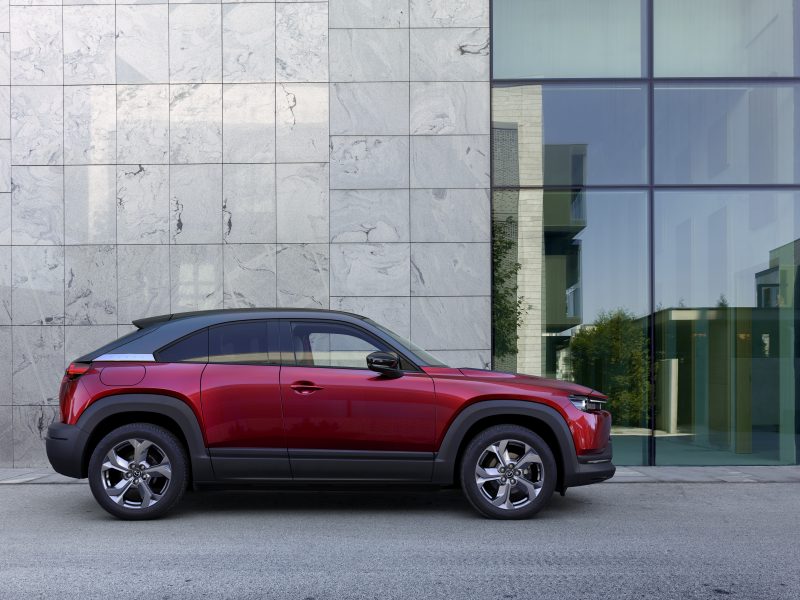
“In design, especially in our colour and material department, we are constantly looking at changes in material trends and technologies”, commented Jo Stenuit, Mazda European Designer Director. Adding, “we have been using interesting eco-friendly material processes even before the MX-30, but the MX-30 was the perfect platform to show-off our developments in this field”.
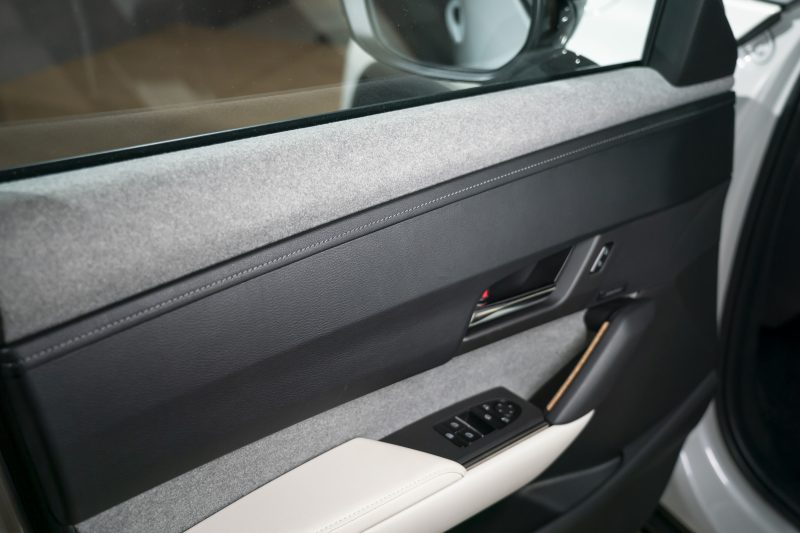
The upper section of the MX-30 door interior panel is trimmed in a reprocessed fabric made from recycled PET bottles. Development of a new method for integrated moulding of textile and plastic fibres made it possible to create a material with a soft touch that can be processed easily. But it’s not just plastic recycling where Mazda is leading the industry, Mazda has also developed an industry leading high quality bio-plastic, first seen on the 2015 MX-5 and used extensively on Mazda3 and Mazda CX-3, it features on the MX-30’s front and rear doors, relying on its high quality finish to contribute to the design.
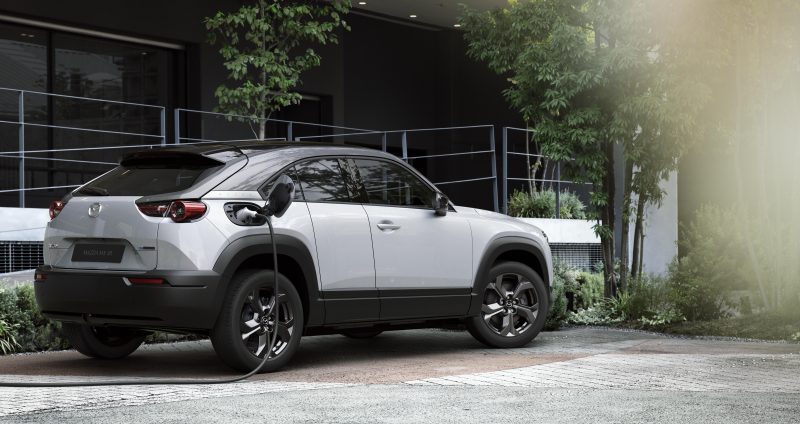
Following on from developing the world’s first biofabric in 2007, Mazda’s new Premium Vintage Leatherette, developed for the MX-30, is produced using water rather than organic solvents, helping to reduce the environmental impact and belies the conventional wisdom that artificial leather is merely a poor substitute for the real thing. It features a vintage leather texture printed onto a high-quality artificial leather base, then a silicone coating with a precisely controlled surface layer thickness is applied, giving the material an appearance of depth and a pleasing tactile quality.
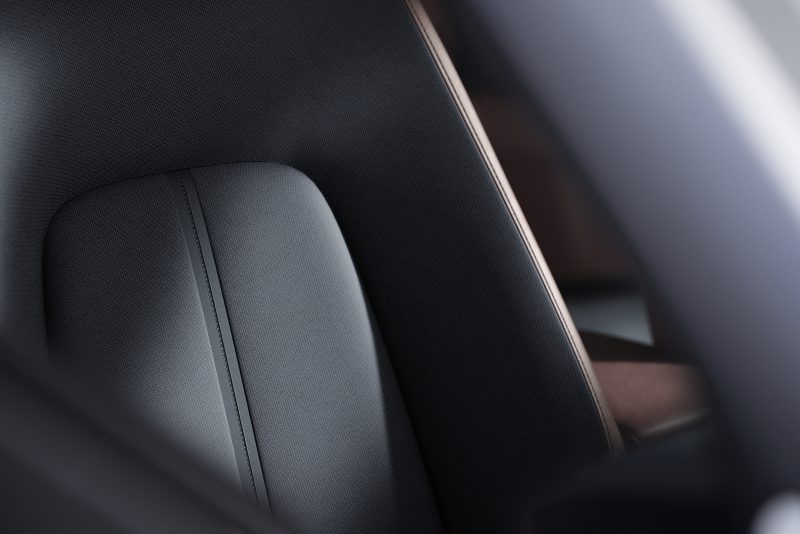
However, it is not just recent environmental considerations that have led Mazda to develop new techniques for recycling or creating environmentally friendly plastics, Mazda’s research into plastic recycling has been ongoing since the late 1980’s. Recognising the environmental need to recycle plastic, Mazda was the first automotive manufacturer to recycle used bumpers in 1992, initially these bumpers were used to produce pens and plastic automotive parts that were unseen, such as undertrays.
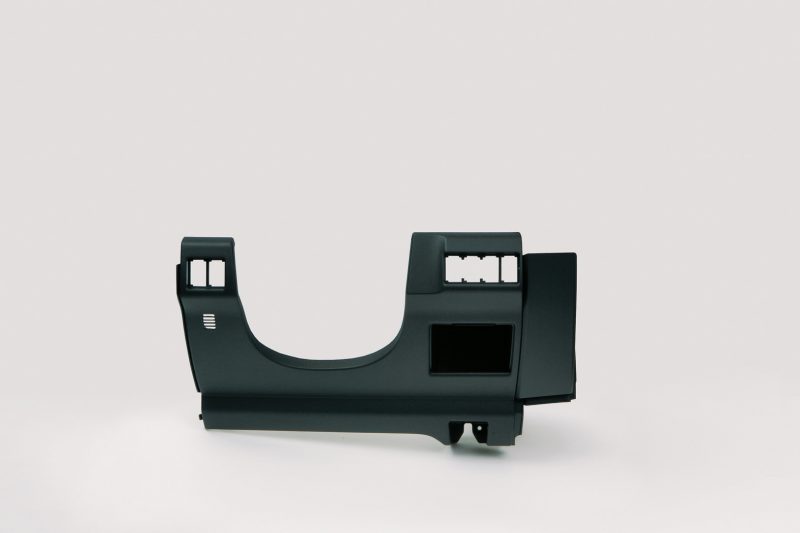
The problem with end-of-life vehicles was many of the bumpers were more than ten years old making it technically and financially difficult as they varied in terms of paint adhesive properties and composition of their plastic. One of the biggest barriers to recycling old bumpers was the inefficient paint removal process. By 2001 Mazda had improved the paint removal process sufficiently to allow the use of the plastic to reinforce new bumpers, and by 2007 had refined the process to remove 99.9% of the paint, leading the way to develop a process to use the recycled plastic in the manufacture of new bumpers.
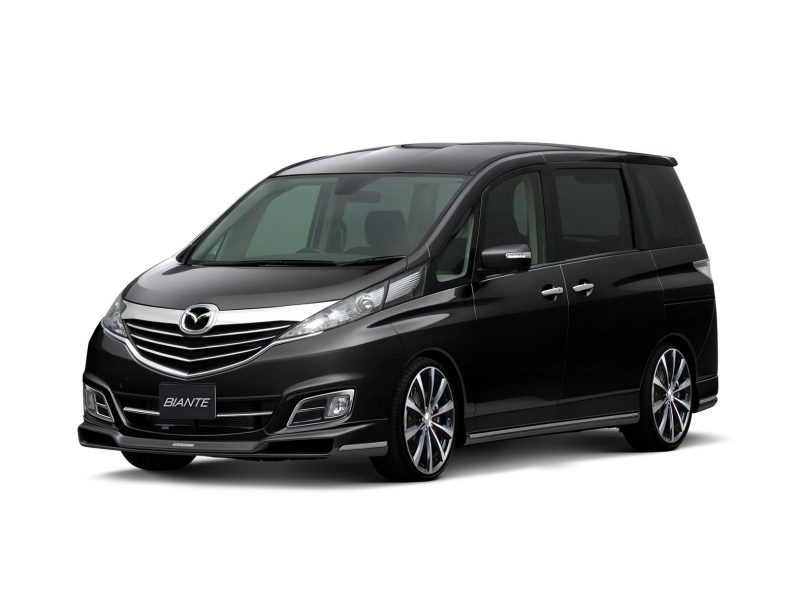
As a result, by 2011 Mazda had developed their world-first recycling technology sufficiently to allow end-of-life bumpers to be converted into plastic resin which was of sufficient quality for use in new car bumpers, first used on the Mazda Biante minivan. Recycled plastic is now used extensively in all new Mazda cars.
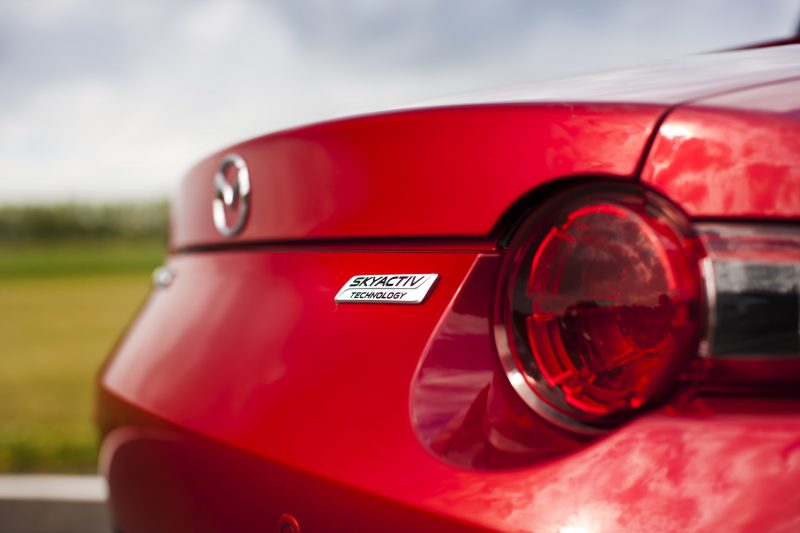
Another world first in plastic development happened in 2015 with the development of bio-based engineering plastic made from plant-derived materials, reducing the use of petroleum resources and carbon dioxide emissions. Waste plant material, such as wood shavings and plant material, is turned into ethanol which is then converted into ethylene and polypropylene. This process is carbon neutral and, unlike alternative materials made from soy or cornstarch and does not remove food resource. Bioplastics feature a higher quality finish than traditional painted plastics and can be used for both interior and exterior use. The first use of bioplastic was in the Mazda MX-5 in 2015 and has been subsequently used in Mazda CX-5, Mazda3, Mazda2, Mazda CX-30 and will be used on the Mazda MX-30.
In order to help preserve the planet’s resources it is the responsibility of businesses to provide products and services that benefit the earth and society and Mazda continues to be at the forefront of developing environmentally friendly and recycled plastics for future product, reducing the use of fossil fuels and emissions as part of its Sustainable Zoom Zoom 2030 plan. Launched in 2017, the plan embodies the corporate vision of brightening people’s lives through car ownership and offering cars that are sustainable with the earth and society to more people and is a roadmap for Mazda to develop technologies that will help resolve issues faced by the earth, society and people.

